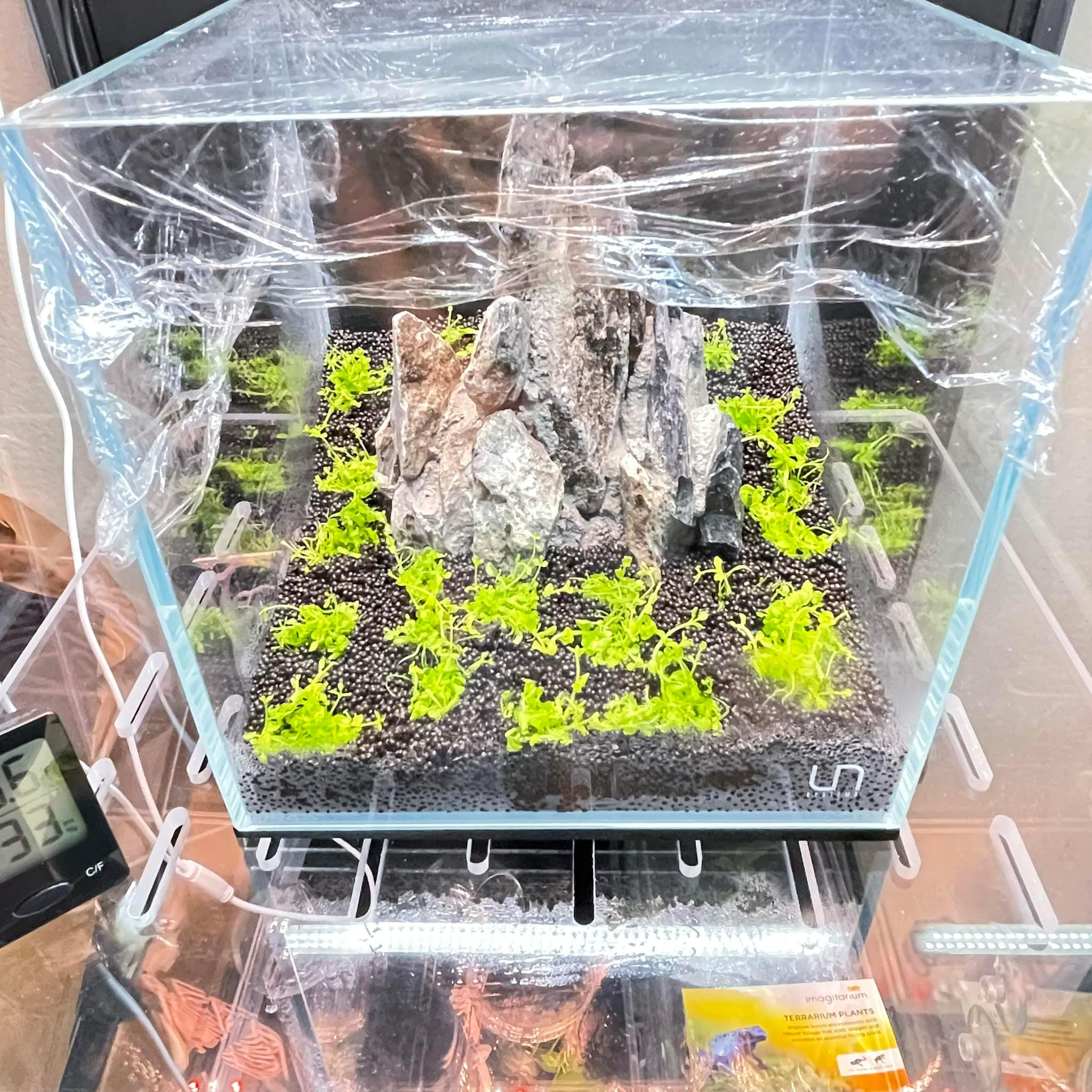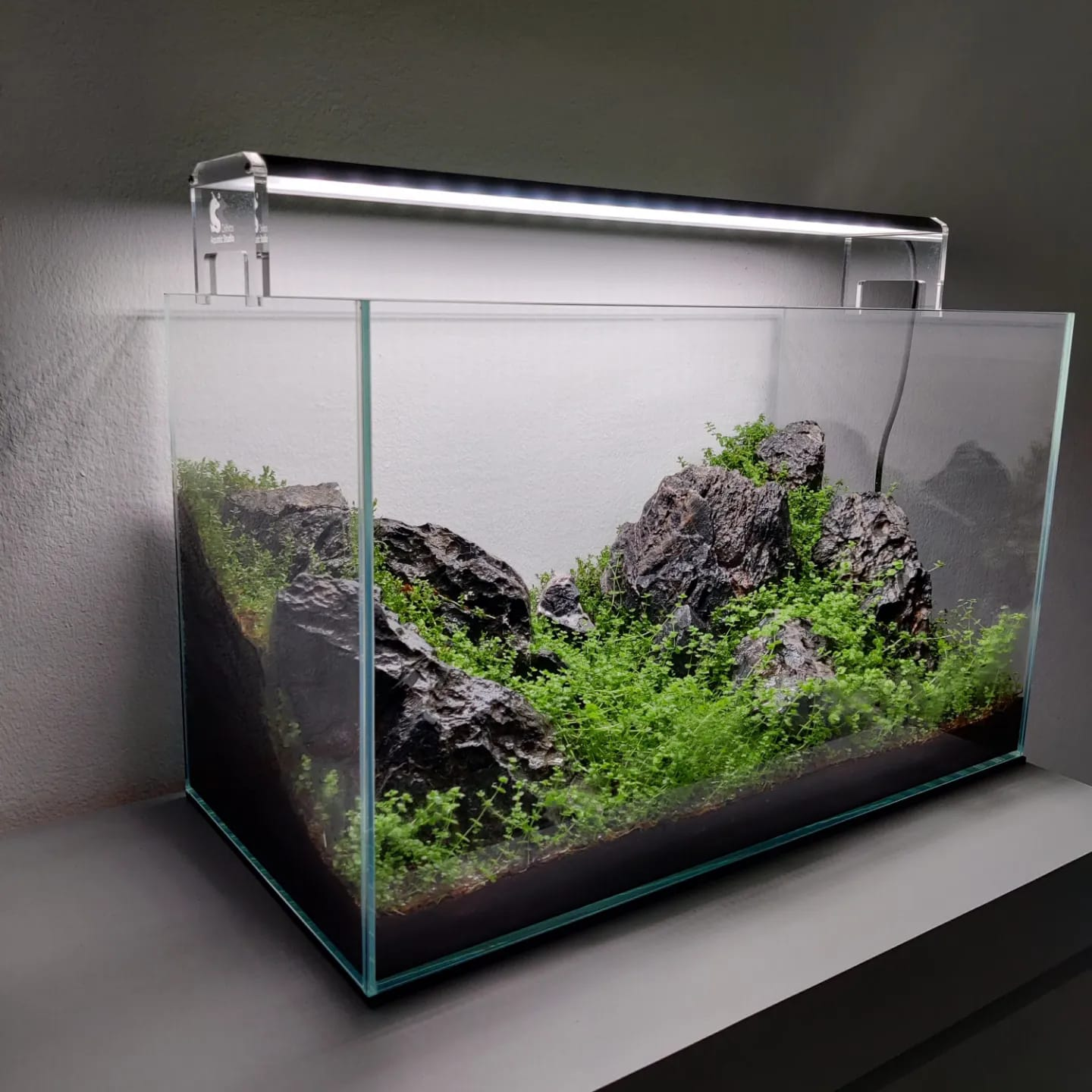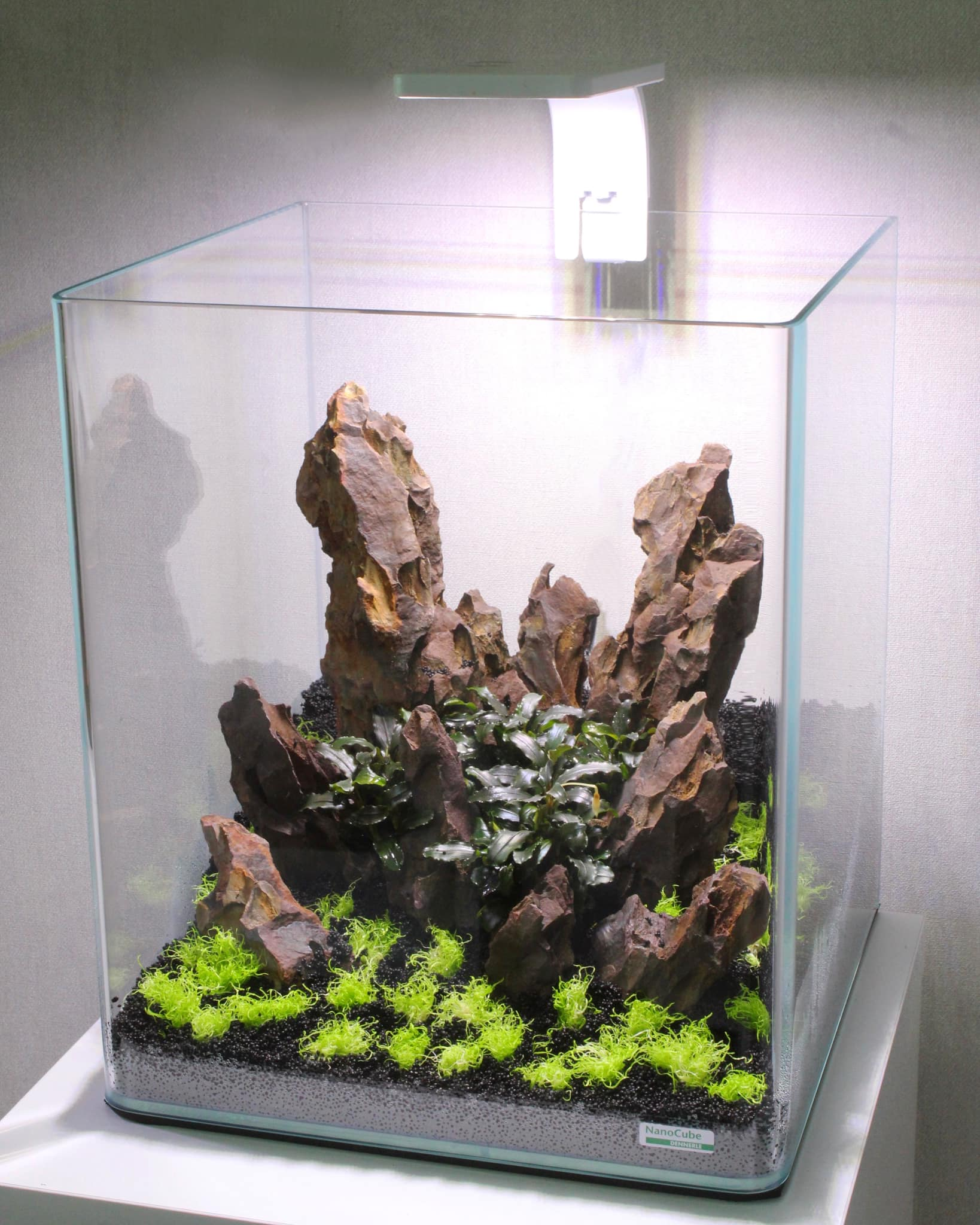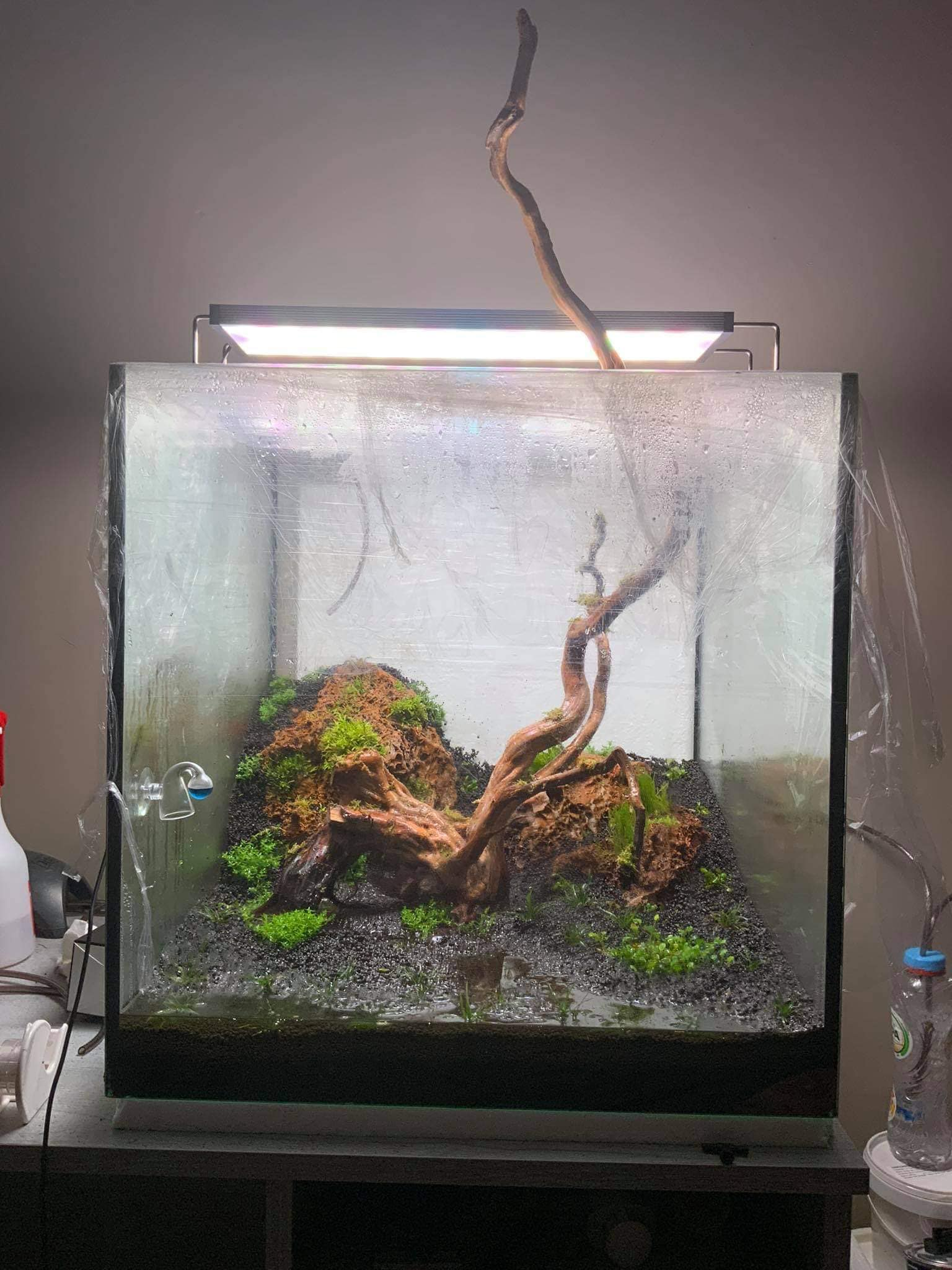Dry start method in the aquarium: pros and cons
There is a trend that is being treated as the solution or a good alternative to algae problems commonly encountered in a newly set up planted tank. This is supposed to save trouble and time of having to wait for the plant growth and give that fully matured tank in an instant or almost. This is called “the Dry Start Method”. This is by no means a new method and has been used by experienced aquascapers for years. This article is not a tutorial on how to do the dry start method. This is meant to tackle the advantages and disadvantages of the dry start method as well provide additional information and insight.

Introduction
This method is basically described as growing the plants in their emersed form in the tank, waiting for them to release roots to the wet substrate and become fully matured and developed before the tank is flooded. This is an easier way to have that Iwagumi fully covered in green carpet without the risk of algae growth while the plants are establishing themselves or recovering from having been replanted. Most available plants on the market are grown in emersed state so transplanting them in the same environment that they came from would mean less stress for the plants making it easier and faster for them to establish themselves in the new environment.
Doing the dry start method will also help save CO2 as plants are completely grown out of water and can easily get the CO2 from fresh air. These plants of course would have to be grown in a moist environment so spraying the plants regularly with water and putting a transparent lid, plastic wrap or cling film on top of the tank are essential to keep the moisture from evaporation and thus- high humidity.
When to use the Dry Start Method?
Dry Start Method is most especially effective with Iwagumi. This method is said to be most effective in low growing plants like carpeting plants for example. This is because most of these types of aquarium plants have similar emersed and submersed leaf forms so not much change can be noticed when the plants finally transition to submersed leaves when the tank is finally flooded.
Some plants like Monte Carlo, Dwarf Hair Grass, HC – Cuba, and some mosses are very suitable for the dry start method. DSM works also with the following plants: Pogestemon Helferi (Downoi), Staurogyne Repens, Brazilian Microsword and even Anubias Nana.
While it is most suitable to most low-lying plants, it cannot be applicable to all low-lying plants. Aquarium plants that have a very different and specific submersed leaf form compared to emersed state like Marsilea Crenata and Marsilea Hirsuta would only fill up the tank in dry start only to have it loose all its leaves to transition. Other plants like Echinodorus Tenellus and some forms of Micro swords would do the same thing.

When not to use the Dry Start Method?
Growing the regular stem plants like Rotalas and Ludwigias generally is not suitable for the dry start method as well because their emersed leaves are totally different from their submersed leaves. The transition from emersed to submersed form would be quite noticeable. This may end up giving the scape a totally different appearance when flooded. Growing these types of plants in a dry start method will also defeat the purpose of the method. Instead of having a fully scaped and matured looking tank upon flooding, there would have to be a considerable amount of time needed during the transition phase, so might as well plant these types of plants in a scape and flood the tank right away like the traditional aquascaping method. Aquatic plants which involve melting leaves in their transition from emersed to submersed would also not be a good idea to use for this method. It would simply not look good when the time comes for the tank to be flooded.

This method also does not apply to the true aquatic plants like the Blyxas and Valisnerias. They simply lack the emersed form in order for this to be executed successfully with these plants.
Dry start can also be done partially. An example of this would be trying to have the tank’s hardscape be covered in moss. The moss can be chopped and then spread all over the hardscape like rocks or wood. No glue or thread is needed to anchor the moss. Just allow it to grow and in time it will take hold of the rocks or wood just like it would in nature. Moss grown this way would be more natural looking compared to moss glue or tied. After the moss has taken hold, the planted aquarium can then be flooded and you ca start planting other species to the scape.

Disadvantages of the dry start method
One big disadvantage to the dry start method is that it requires knowledge of both growing a specific aquatic plant emersed and submersed. The first few months will require to have proper knowledge of growing the plant emersed while the second part (after flooding) requires for knowledge on growing this plant submersed. Not only that, it requires the aquascaper to know what to expect during transition. A lot of people actually redo their entire setup thinking they have failed just because their Cryptocorynes melted when in fact it was just apart of Cryptocoryne’s transitioning from emersed to submersed form.
While a lot of materials (videos and tutorials) can be found on growing most of these plants submersed, not much can be found on growing them emersed. Not knowing what to expect, it would be difficult for an aquarium owner who does not have any experience growing emersed plants to try this. While emersed setups are much simpler than submersed setups, still there are things to consider like moisture and intensity of the light. Aquascapers often find themselves adjusting their light once the tanks are flooded and the plants will finally be submersed.

Summary
Do the research and know the necessary procedure before attempting this method. Know what to expect and anticipate potential problems in both emersed and submersed setups. Remember that dry start method is not recommended for stem plants but more for carpeting plats being the lowest point of the arrangement. Keep the moisture level high. Keep the substrate wet. Keep calm :D Like any other aspect in this hobby. The Dry Start Method requires constant learning and observation and like any other aspect in this hobby there is no pre-made formula to ensure 100% success. Search for information about the dry start method on Youtube- you will find there a decent dose of valuable tips!



